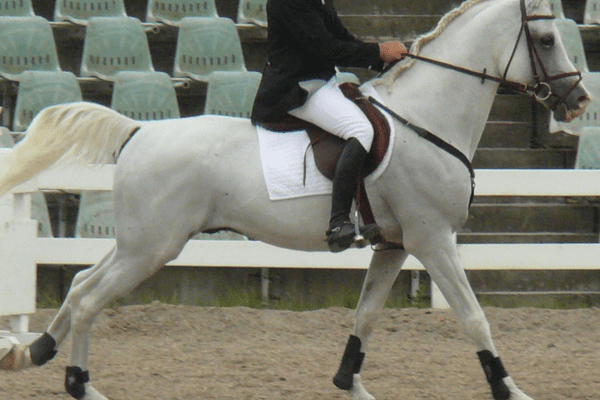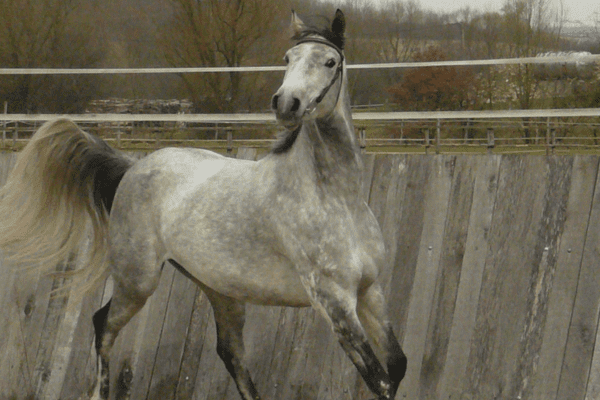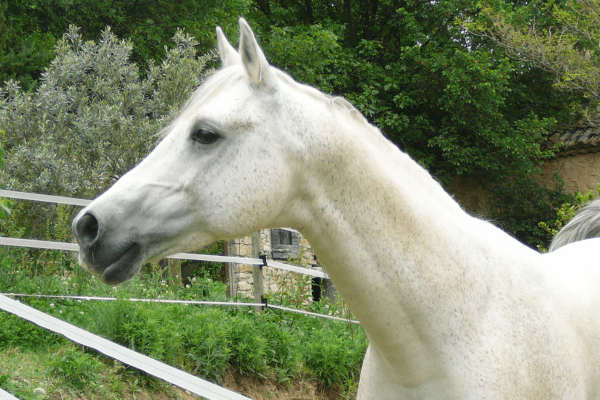Originating in 19th-century Austro-Hungarian Empire, Shagya Arabian horses combine elegance with agility for modern equestrian disciplines. While their impressive characteristics remain well known among horse enthusiasts worldwide, these treasured breeds remain lesser-known gems.
History & Origin
Genesis in the Austro-Hungarian Empire
Within the 19th-century Austro-Hungarian Empire, the Shagya Arabian was carefully developed in five key military stud farms – Babolna, Piber, Radautz, Mezohegyes and Topolcianky in Hungary, Austria Romania and Slovakia respectively. Each farm had their own distinct blend of traits that combined classic Arabian traits with essential modern horse characteristics that gave rise to this breed’s development.
Breeding for Excellence and Capacity
History: Conceived specifically to meet the demands of Imperial Hussars, the Shagya Arabian combined the intelligence, endurance, and distinctive features typical of Arabian breeds with larger frames and enhanced carrying capacities.
Strategic Breeding: Integrating non-Arabian horse genes was often employed to achieve desired traits while still maintaining core Arabian qualities.
An Emblematic Name in History
Inception with Shagya: At its inception, this breed’s namesake, Shagya was imported to Babolna from Syria as an Arabian grey stallion in 1836 and stood 16 hands at approximately. Bred initially by Bani Saher tribe for Bani Saher tribe members as part of their breeding programs, this horse would carry forward its legacy through various breeding programs without having any pure Arabian descendants to pass down through generations.
Contributing Stallions: Beyond Shagya, foundational stallions like Gazlan-gazal, Mersuch, Kemir and Amurath from Weil Stud Farm were instrumental in shaping the genetic makeup of their breed.
An Assortment of Equine Bloodlines
Diverse Inputs: The breeding strategy utilized not only Arabian horses like Kuhaylan Zaid and Egyptian stallions Farag and Ibn Gaial but also welcomed genetic contributions from Lippizaners and English thoroughbreds.
Resultant Traits: This heterogeneity was intended to increase size, improve movement and strengthen riding qualities – leading towards an optimized version of the breed.
Recognition and Categorization
WAHO (World Arabian Horse Association) recognized this remarkable breed in 1978 by giving them their own designation – Shagya. This distinction marked its identity apart from general Arabian classification.
Shagya Arabians are distinguished breeds. While their name includes “Arabian”, their identity does not coincide with traditional, purebred Arabians; rather they represent selective breeding practices backed by selective and strategic breeding policies.
Refined Classification: The Shagya Arabian is an exquisite example of meticulous breeding history that resulted in an equine design that blends traditional and modern characteristics while exuding nuanced distinction.
Recounting the history and story of Shagya Arabian horses, we embark on a journey interwoven with strategic breeding, historical significance and an unwavering dedication to equine excellence – culminating in a breed that now represents robustness, elegance and multifunctional functionality in global equestrian circles.

Distinguishing the Shagya Arabian: A Unique Equine Pedigree
Unique Recognition Within the Arabian Context
Shagya Arabians take great pride in being recognized within the Arabian context despite not being classified as traditional “pure” or asil Arabians, making their mark as distinguished equestrians with unique titles within equestrianism.
WAHO Patronage: Shagya Arabians have earned themselves an exclusive place within the World Arabian Horse Organization (WAHO).
Breeding Purity: Although purebred Arabian horses exhibit their own breeding purity, they stand apart from that category.
The Significance of 1978
WAHO issued a historic declaration, which comprehensively defined and separated breeding standards and classifications of Shagya Arabian horses.
Purebred Shagya Arabians can only be considered purebred when produced through Babolna and Topolcianky breeding systems.
Emblem Usage: Organizations recognized as associate members of WAHO were granted permission to utilize the WAHO emblem.
Pedigree and Recordkeeping
Hungarian studs’ commitment to meticulous recordkeeping stands out as a notable aspect of the breed’s history.
Longer Pedigrees: Certain Shagya Arabians often boast longer and more comprehensive pedigrees than horses classified by other registries as purebred Arabians.
Distinct Lineage: Shagya Arabians remain distinct breeds with their own bloodline, maintaining their classification in spite of any complex pedigrees that might exist between the breeds.
With our study of Shagya Arabian horses, we unlock their intricate history through breeding practices, classification practices and recordkeeping; uncovering an exquisitely pure breed with an unmistakably legendary pedigree within equestrian sport.

Characteristics:
Shagya Arabian horses exhibit an appealing combination of traits from purebred Arabians as well as their own individual physical characteristics.
High Tail and Endurance: Notable for a characteristically high-carried tail and remarkable endurance.
Bone Strength: They boast a sound, robust bone structure indicative of excellent health and vitality.
The Intricacies of Breeding: A Delicate Balance
Shagya Arabian breeding practices have long been characterized by an intricate dance between maintaining purity and adding new physical characteristics, making for successful practices that produce stunning offspring.
Non-Arabian Input: By adding non-Arab influences into their breeding, non-Arabian elements subtly but significantly alter their physicality.
Breeding Goals: Hungarian Studs use specific goals as guides in developing Shagyas, particularly to increase their physical stature.
A Statuesque Presence: Exploring Height Distinctions
An exploration into the physical dimensions of Shagya Arabian dogs reveals an arresting distinction from purebred Arabians, particularly with regard to their height.
Lofty Stature: Shagyas typically stand at an impressive height of 15 hands or higher, often surpassing 16.
Comparative Heights: Purebred Arabians typically follow breed standards that range between 14.1 and 15.1 hands in height, though there can be variations beyond these metrics.
Shagya Arabian horses stand out as one of the premier examples of both beauty and strength in equine breeding, embodying both Arabian horse elegance and robustness in one stunning animal, yet maintaining their own distinct robustness and high stature.
Deliberate breeding practices have managed this delicate balance between traditional Arabian traits such as endurance and physical prowess as well as modern physical qualities to produce this breed that stands both strong and new.

Utilitarian Roles of the Shagya Arabian Horse:
The Shagya Arabian horse is well known for its specific set of attributes that make it an invaluable asset in various fields due to its physical and temperamental traits. Recognized for their versatile applications such as functional, competitive, recreational or even therapeutic applications – which demonstrates their proficiency and adaptability across a multitude of settings.
Role in Endurance Riding
The Shagya Arabian horse stands out with its remarkable endurance capabilities, making it ideal for endurance riding and long distance races. Their inherent stamina and ability to keep performing over long distances make this breed suitable for competitive endurance competitions.
Participating in Equestrian Sports
Shagya Arabian horses have long been prized for their remarkable physical attributes such as height and bone structure. As such, these breeds have made an impactful statement in equestrian sports like show jumping and dressage competition. Their agility and ability to develop rider rapport make them valuable performers in these competitive arenas.
Application in Recreational Riding
The breed is widely recognized for its stable temperament and easy handling, making them suitable for recreational riding applications. Their controlled yet thrilling rides cater to both beginners and more advanced riders alike – making the breed perfect for recreational applications.
Contribution to Therapeutic Riding
Shagya Arabian horses have long been used as therapeutic companions, providing emotional and physical healing through their gentle nature and ability to connect with humans. Participation in therapy programs demonstrates their suitability as supportive healing environments.
Utility in Agricultural Practices
Shagya Arabians have long been valued for their physical strength and cooperative nature in agricultural settings, aiding with tasks such as ploughing and transporting goods. Their robust structures and cooperative temperament perfectly meet the physical demands of agricultural work.


